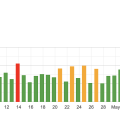Alright, imagine you’re diving into the bustling world of the internet, where countless websites aim to capture your attention. “What Is SEO?” unpacks the essentials of Search Engine Optimization—breaking down how it works and why it’s crucial for online success. You’ll learn the nuts and bolts of boosting a website’s visibility on search engines, making it easier for people to find what you’re offering amidst the digital noise. This one-stop guide will help demystify SEO, giving you straightforward insights and practical tips to elevate your online presence.
What Is SEO?
Have you ever wondered how certain websites always seem to appear at the top of your search results? It’s not magic, even though it can feel like it. It’s all about SEO, or Search Engine Optimization. So, what is SEO, and why should you care about it? Let’s dive in!
Understanding SEO
What is SEO?
SEO, short for Search Engine Optimization, is a set of strategies and techniques aimed at increasing a website’s visibility on search engines like Google, Bing, and Yahoo. The higher your site ranks in these search results, the more likely you are to draw traffic. Think of SEO as the roadmap that helps people find your website in the vast expanse of the internet.
Why is SEO Important?
Imagine you’ve written a fantastic, informative article. If it’s buried under thousands of other web pages, no one is going to see it. SEO is what ensures your article doesn’t get lost in the abyss. It’s like putting up bright neon signs directing people to your content. Beyond visibility, good SEO can also make your website more user-friendly and efficient.
How Do Search Engines Work?
Before diving deeper into SEO, it’s crucial to understand how search engines work:
- Crawling: Search engines use bots to crawl the internet and discover new and updated web pages.
- Indexing: Once discovered, these pages are indexed or organized in a massive database.
- Ranking: When you perform a search, the search engine scans its index to find the most relevant results, ranking them based on various criteria.
Core Components of SEO
On-Page SEO
On-page SEO refers to optimizing individual pages on your website to rank higher. It involves a variety of elements:
- Keywords: These are the words and phrases people type into search engines. Using the right keywords strategically can dramatically improve your site’s visibility.
- Meta Tags: These snippets of text provide information about your page to search engines.
- Quality Content: High-quality, relevant content can engage readers and encourage them to spend more time on your site.
Off-Page SEO
Off-page SEO focuses on activities that happen outside of your website but impact your ranking:
- Backlinks: These are links from other websites to your own. Think of them as votes of confidence from other sites.
- Social Signals: Your social media presence can also influence your SEO.
- Brand Mentions: Every time your brand is mentioned online, even without a link, it can impact your ranking.
Technical SEO
Technical SEO involves optimizing the backend of your site to help search engines crawl and index it more effectively:
- Site Speed: Websites that load quickly often rank better.
- Mobile-Friendliness: More people than ever use mobile devices to browse the internet.
- Secure Sockets Layer (SSL): Having an SSL certificate can improve your ranking and secure your site.
| Component | Key Activities |
|---|---|
| On-Page SEO | Keywords, Meta Tags, Quality Content |
| Off-Page SEO | Backlinks, Social Signals, Brand Mentions |
| Technical SEO | Site Speed, Mobile-Friendliness, SSL Certificate |

Keywords: The Foundation of SEO
What Are Keywords?
Keywords are the terms or phrases that users enter into search engines. For example, if you run a bakery, essential keywords might include “best cupcakes” or “local bakery near me.” The better you tailor your content to these keywords, the more likely you are to attract traffic.
Types of Keywords
There are different kinds of keywords to consider:
- Short-Tail Keywords: These are short, general keywords like “shoes.” They have high traffic but also high competition.
- Long-Tail Keywords: These phrases are longer and more specific, like “running shoes for flat feet.” They may have lower search volume but often have higher conversion rates.
- LSI Keywords: Latent Semantic Indexing (LSI) keywords are terms related to your main keyword. For instance, if your main keyword is “apple,” LSI keywords could include “iPhone,” “MacBook,” or “fruit nutrition.”
How to Choose the Right Keywords
- Brainstorm: Start by brainstorming a list of potential keywords related to your business.
- Research: Use tools like Google Keyword Planner or Ahrefs to find keywords with a good balance of search volume and competition.
- Analyze Competitors: Look at what keywords your competitors are ranking for and consider targeting similar terms.
- Long-Tail Keywords: These are gold mines for SEO. They may attract less traffic but are often easier to rank for and more likely to convert.
Keyword Integration
Keyword integration is not about stuffing your content with keywords but rather incorporating them naturally. Here are some tips:
- Headings: Include keywords in your headings and subheadings.
- Content: Scatter them naturally throughout your text.
- Meta Tags: Use them in meta descriptions and title tags.
- URLs: Include keywords in URLs when possible.
Creating High-Quality Content
The Role of Content in SEO
You’ve probably heard it said a thousand times before: “Content is king.” But what does that mean for SEO? High-quality, relevant content keeps readers engaged and encourages them to spend more time on your site, signaling to search engines that your site is valuable.
Characteristics of High-Quality Content
Good content is:
- Original: Avoid duplicate content at all costs.
- Informative: Provide value and answer the questions your audience is asking.
- Engaging: Use a conversational tone, ask questions, and make the information digestible.
- Well-Structured: Use headings, subheadings, bullet points, and images to break up the text.
Content Types That Boost SEO
Different types of content can impact your SEO differently:
- Blog Posts: Frequently updated blogs can keep your website fresh.
- How-To Guides: These provide valuable, actionable information to users.
- Listicles: Lists are easy to scan and often shared more frequently.
- Infographics: These can attract backlinks and are highly shareable.
- Videos: Video content can significantly boost engagement rates.

On-Page SEO Strategies
Title Tags and Meta Descriptions
Title tags and meta descriptions are crucial for two reasons: they influence your click-through rates and help search engines understand your page content. Keep title tags under 60 characters and meta descriptions under 155 characters while incorporating relevant keywords.
Header Tags
Header tags (H1, H2, H3, etc.) help to structure your content and improve readability. They also signal to search engines what your content is about. Your main keyword should appear in your H1 tag, and related keywords can be used in H2 and H3 tags.
URL Structure
A clean, descriptive URL structure can improve both user experience and SEO. Use hyphens to separate words and include your primary keyword.
- Good URL: example.com/best-chocolate-chip-cookies
- Bad URL: example.com/12345
Internal Linking
Internal links connect different pages on your site. They help spread link equity (ranking power) and make it easier for search engines to index your pages. Use descriptive anchor text for your internal links.
External Linking
Linking to high-quality, authoritative sites can improve your own site’s credibility. Just make sure the external links are relevant to your content.
Mobile Optimization
With more people using mobile devices, Google has switched to a mobile-first indexing approach. This means the search engine primarily uses the mobile version of your site for ranking and indexing. Ensure your site is mobile-friendly by:
- Responsive Design: Make sure your site adjusts to different screen sizes.
- Fast Loading Times: Aim for pages that load in under three seconds.
- Clear Navigation: Simplify menus and clickable elements for touch screens.
Off-Page SEO Strategies
Building Backlinks
Backlinks are one of the most critical factors in SEO. They’re like endorsements from other websites. Here’s how to build them:
- Guest Blogging: Write articles for other sites and include a link back to your own.
- Outreach: Reach out to influencers or other site owners for backlink opportunities.
- Content Marketing: Create shareable content that naturally attracts backlinks.
- Lists and Directories: Submit your site to industry-specific directories.
Social Media Signals
While social signals (likes, shares, and comments) aren’t direct ranking factors, they can amplify your content’s reach, indirectly helping your SEO. Share your content on social media and engage with your audience.
Local SEO
If you run a local business, optimizing for local search is crucial. Here’s how:
- Google My Business: Create and optimize your Google My Business listing.
- Local Keywords: Use keywords specific to your location.
- Online Reviews: Encourage satisfied customers to leave reviews.
- Local Backlinks: Get backlinks from local newspapers, blogs, and directories.

Technical SEO Strategies
Site Speed
A faster site doesn’t just please your users; it’s also a ranking factor for Google. Here are some tips for improving site speed:
- Optimize Images: Compress images to reduce their load time.
- Browser Caching: This stores static files, so they don’t need to be reloaded every visit.
- Minimize HTTP Requests: Reduce the number of elements on each page, like scripts and images.
- Use a Content Delivery Network (CDN): This distributes your content geographically, so it’s closer to your users.
Secure Sockets Layer (SSL)
An SSL certificate ensures that data passed between the user and your site is encrypted. You can recognize SSL by the “https” in a URL. Google considers SSL a ranking factor, so it’s worth investing in.
Mobile-Friendliness
As mentioned earlier, ensure your site is optimized for mobile devices. You can use Google’s Mobile-Friendly Test tool to check how easily a visitor can use your page on a mobile device.
Structured Data
Structured data, or schema markup, helps search engines understand your content better. While it might not directly impact ranking, it can influence how your site appears in SERPs (Search Engine Results Pages), often leading to enhanced listings.
For example, adding structured data to pages with reviews can result in rich snippets, displaying star ratings in search results:
| Type of Structured Data | Example of Usage |
|---|---|
| Review | Show star ratings in search results |
| Product | Display price, availability, and review ratings |
| Event | Show event dates, locations, and ticket information |
| Recipe | Display cooking time, ingredients, and ratings |
Measuring and Analyzing SEO Performance
Google Analytics
Google Analytics is a free tool that provides insights into your website traffic and user behavior. Here’s how to use it for SEO:
- Track Organic Traffic: See how much of your traffic comes from organic search.
- Behavior Flow: Understand how users navigate your site.
- Conversion Tracking: Measure how often users complete specific actions, like making a purchase.
Google Search Console
Google Search Console helps you monitor and troubleshoot your site’s presence in Google search results. Key features include:
- Search Analytics: See which queries bring traffic to your site.
- Crawl Errors: Identify and fix issues that prevent search engines from indexing your site.
- Sitemap Submission: Submit your sitemap to help Google understand your site structure.
SEO Audits
Regular SEO audits help you identify issues and opportunities for improvement. Consider these key areas:
- Technical Errors: Check for broken links, duplicate content, and crawl errors.
- Content Quality: Evaluate if your content is still relevant and up-to-date.
- Backlink Profile: Analyze the quality and quantity of your backlinks.
Key Performance Indicators (KPIs)
Monitoring certain KPIs can give you a clear picture of your SEO performance:
| KPI | What It Measures |
|---|---|
| Organic Traffic | The number of visitors arriving through search engines |
| Bounce Rate | The percentage of visitors who leave after viewing one page |
| Average Session Duration | The average time visitors spend on your site |
| Conversion Rate | The percentage of visitors completing a desired action |
| Pages per Session | The number of pages a visitor views in one session |
Common SEO Myths
SEO is a One-Time Task
SEO is not something you do once and forget about. It’s a continual process that involves regular updates and tweaks. Search engines continuously update their algorithms, and staying ahead requires ongoing effort.
More Keywords is Better
Keyword stuffing is not only ineffective but can also lead to penalties from search engines. Focus on using keywords naturally and contextually.
Link Building is Dead
Far from it. While the methods may have evolved, high-quality backlinks remain a crucial ranking factor. Ethical link-building practices can significantly benefit your SEO.
No Need for Mobile Optimization
With the surge in mobile web usage, ignoring mobile optimization is a significant missed opportunity. Mobile-first indexing is now a standard practice by Google, making it essential to ensure your site is mobile-friendly.
Paid Ads Influence Organic Rankings
Paid advertising does not directly influence your organic rankings. However, a holistic digital marketing strategy, combining both SEO and PPC (Pay-Per-Click), can yield the best results.
Conclusion
So, what is SEO? It’s a multifaceted approach to making your website more visible, accessible, and user-friendly. By understanding the intricacies of on-page, off-page, and technical SEO, and continually measuring your performance, you can climb the search rankings and attract more traffic. Remember, SEO isn’t a sprint; it’s a marathon. Consistent effort and staying updated with industry changes are key to long-term success.
Got any more questions about SEO? Feel free to dive into the endless pool of knowledge or start applying these strategies to experience the benefits firsthand. Happy optimizing!











